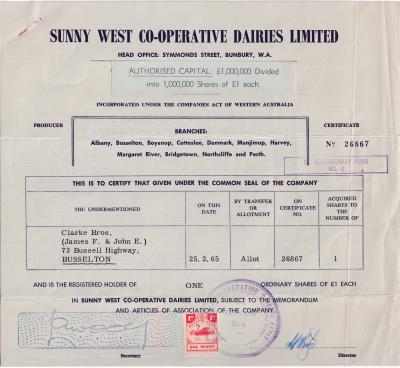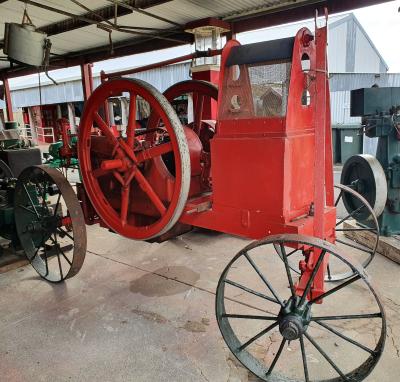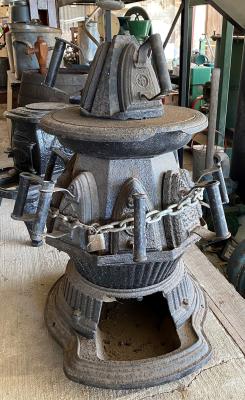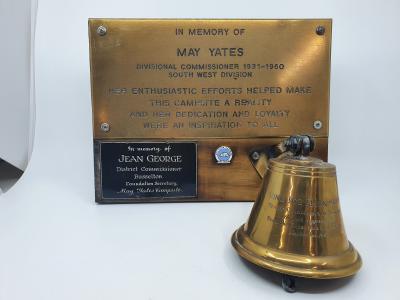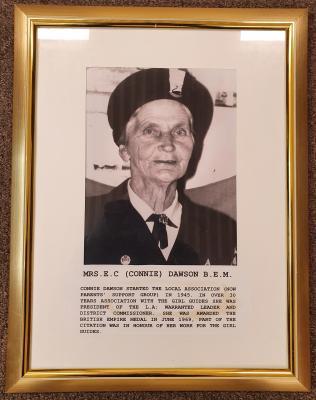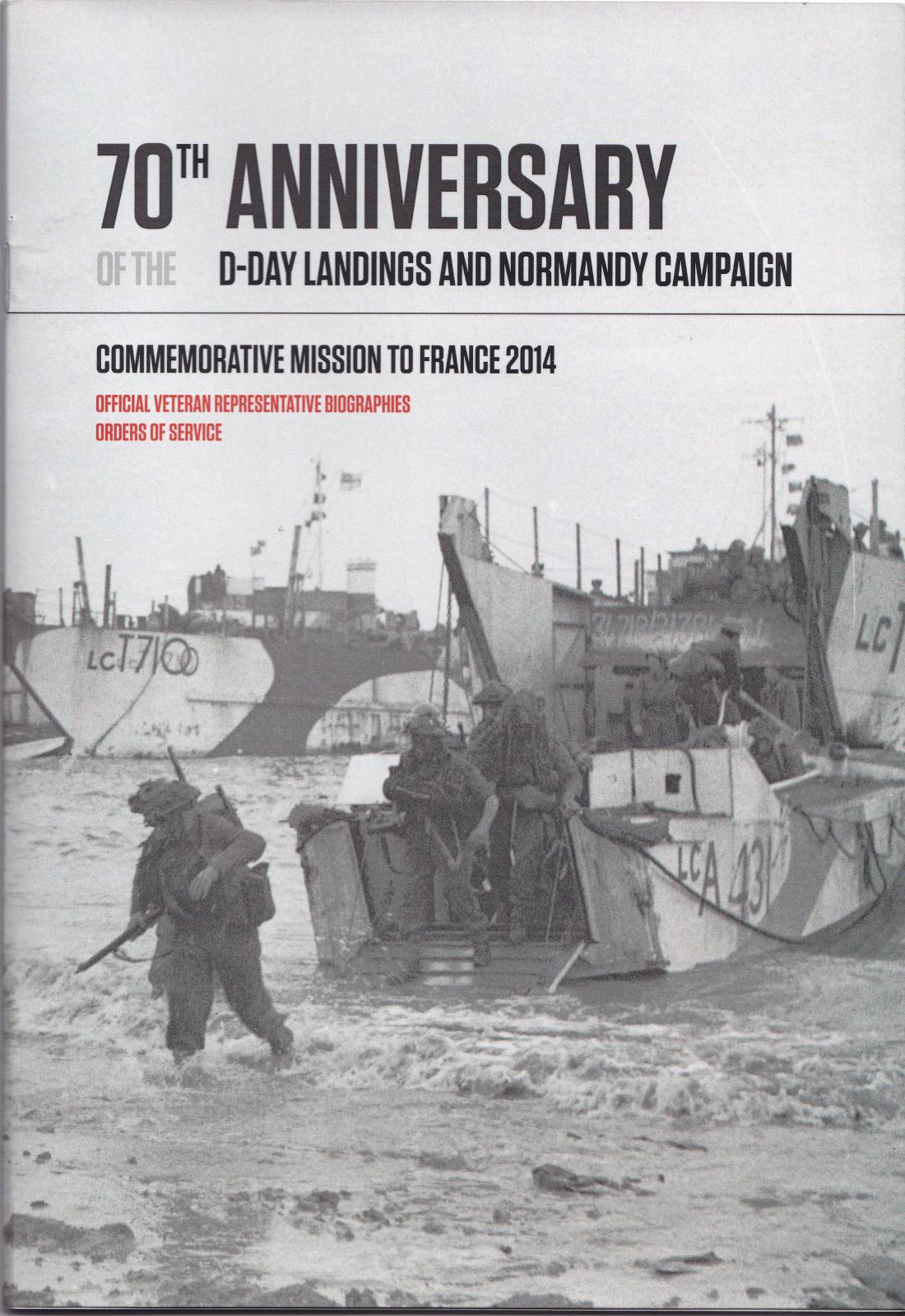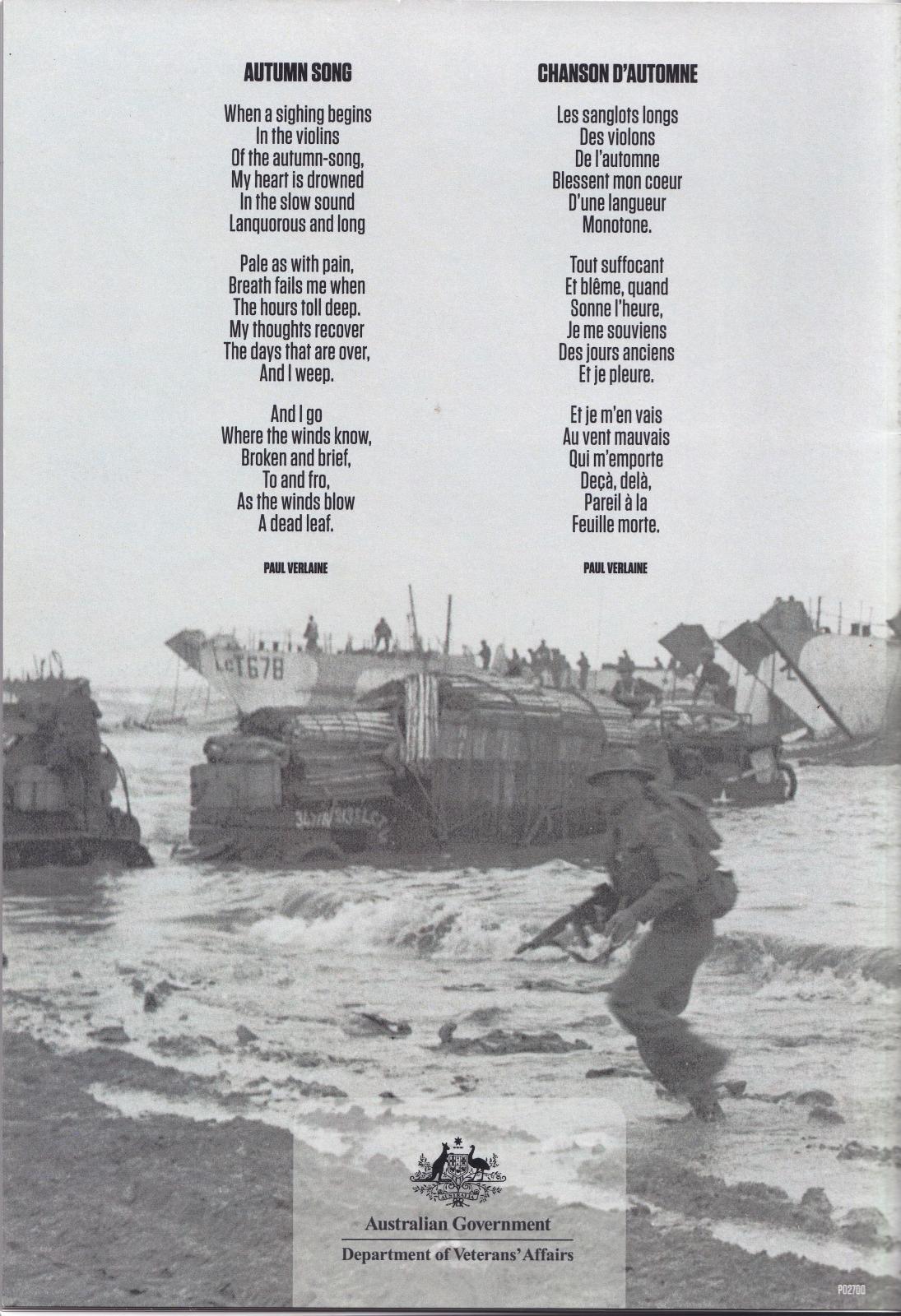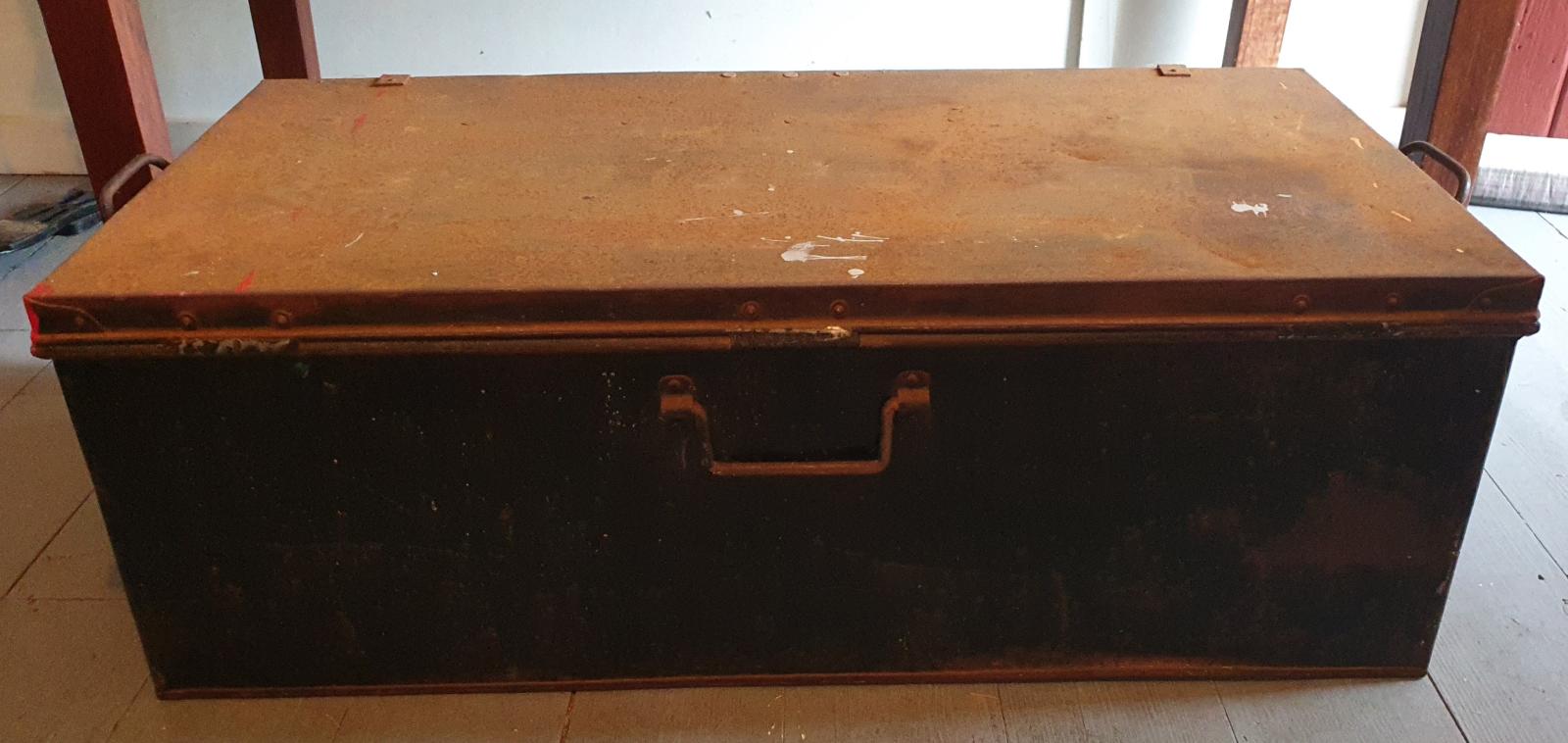Thomas Lofthouse Collection
Metal Trunk used to transport Tom's belonging to and from England during his service in World War II
Statement of Service of Flying Officer Thomas Lofthouse
Legion d'Honneur Presentation booklet
70th Anniversary of the D-Day Landings and Normandy Campaign. Commemorative Mission to France 2014.
THOMAS (TOM) LOFTHOUSE
Australind, Western Australia
Having joined the Citizen Military Forces a year previously, Tom transferred to the RAAF in June 1942 in Claremont, Western Australia, attracted by the overseas travel opportunities it promised. Tom flew a thirty-six operation tour as an Air Gunner in No. 466 Squadron RAAF, later completing ten operations of a second tour as a Rear Gunner with No. 77 Squadron RAF. Originally on draft to serve in North Africa, heavy losses necessitated his transfer to Bomber Command.
As a Rear Gunner, he provided direct support to the D-Day landings, targeting coastal guns and railway yards. His crew flew three missions in the 48 hours surrounding D-Day, which included bombing the railway marshalling yards at Château Dun on the evening of the landings, only to find that the area had already been taken over by British paratroopers the very same day. Describing his tours as lucky, Tom only had a few close calls. The most serious of these occurred on the crew’s first operation, when their plane was coned, hit and damaged by anti-aircraft fire. They made it back to England,
and remarkably all of Tom’s crew survived their first tour of operations. Sadly, Tom’s Mid-Upper Gunner, Bert Golden, was killed on the last operation of his second tour. Tom will always remember the pride that all of his squadron, regardless of individual rank, had in their service with Bomber Command.
Tom was discharged in March 1946 at the rank of Flying Officer. Upon his return to Australia, he recommenced his pre-war employment as a survey hand. Taking advantage of various opportunities for further training, he carved out a long career in that area, which led him to take up a position in Queensland as an engineering surveyor. Years later, he finished his career as a field officer in the Department of Lands and Surveys in Western Australia.
https://www.dva.gov.au/sites/default/files/files/about%20dva/media-centre/biographies/lofthouse-bio.pdf
Details
Details
THOMAS LOFTHOUSE
(1923 Bunbury, Western Australia – 2015 Bunbury, Western Australia)
Tom Lofthouse joined the Citizen Military Forces in 1941 at the age of 17 by lying about his age. Attracted to the overseas travel opportunities offered, he transferred to the Royal Australia Air Force in June 1942 when he turned 18. He trained as a Rear Gunner (also known as Tail-End Charlies) and joined the Australian No. 466 Squadron in Driffield, Yorkshire. The metal trunk used to transport his belonging between Australia and England during his service in World War II shows his name as T.H. Lofthouse because, until he obtained his birth certificate to join the Air Force, he thought his middle name was Hayward, being from the well-known Hayward family of Bunbury. It turned out he had no middle name, but the trunk had already been prepared.
Tom flew a thirty-six-operation tour as an Air Gunner in No. 466 Squadron, later completing ten operations of a second tour as a Rear Gunner with No. 77 Squadron Royal Air Force. Originally on draft to serve in North Africa, heavy losses necessitated his transfer to Bomber Command. As a Rear Gunner, he provided direct support to the D-Day landings, targeting coastal guns and railway yards. His crew flew three missions in the 48 hours surrounding D-Day, which included bombing the railway marshalling yards at Château Dun on the evening of the landings, only to find that the area had already been taken over by British paratroopers the very same day. Describing his tours as lucky, Tom only had a few close calls. The most serious of these occurred on the crew’s first operation, when their plane was coned, hit and damaged by anti-aircraft fire. They made it back to England, and remarkably all of Tom’s crew survived their first tour of operations. Sadly, Tom’s Mid-Upper Gunner, Bert Golden, was killed on the last operation of his second tour. Tom will always remember the pride that all his squadron, regardless of individual rank, had in their service with Bomber Command.
Tom was discharged in March 1946 at the rank of Flying Officer. His crew of 7 young men was the first to survive 30 flights (operations, or "ops", mostly over Germany), an incredibly rare event, so he was invited by the RAF to be an instructor as well as continuing to fly. Then he decided to get back into "real" flying and joined 77 Squadron RAF in Full Sutton, Yorkshire, where he flew even more ops as a rear gunner until the end of the war. These included flights to support the Normandy landings. With 1 in 3 men of Bomber Command being killed, Tom's bravery and sheer good luck at surviving so many ops were recognised with medals including France's highest honour.
Upon his return to Australia, he recommenced his pre-war employment as a survey hand. Taking advantage of various opportunities for further training, he carved out a long career in that area, which led him to take up a position in Queensland as an engineering surveyor. Years later, he finished his career as a field officer in the Department of Lands and Surveys in Western Australia.
Until he died aged 91 in 2015, Tom kept his war memorabilia, including his helmet, photos, letters etc in the metal trunk in his garage, covered with pumpkins and onions. Following his death, the family donated most of his memorabilia to the RAAFA Aviation Museum in Bull Creek (Perth), with the metal trunk and his leather helmet donated to the Busselton Historical Society. Interestingly, the helmet was missing the wires which connected him to the pilot and other crew while he was stuck at the back of the plane. Tom had previously mentioned that his brother Jim had "pinched them for his crystal radio set".
Sources:
Ancestry.com, Pamela Lofthouse Family Tree, Accessed 20 September 2023
Pamela Lofthouse, email dated 18 September 2023
Department of Veterans' Affairs, https://www.dva.gov.au/sites/default/files/files/about%20dva/media-centre/biographies/lofthouse-bio.pdf, Accessed 20 September 2023
Other items from Busselton Historical Society
- Ancient Order of Foresters Certificate - George Samuel Pitts
- Sunny West - Shares certificate
- Scrapbook Album - Florence Hore
- International Harvester Portable Engine
- Commercial Flat Iron Stove
- Dolls Cane Pram
- Post Office Services Sign
- Girl Guides - May Yates (plaque & bell)
- Framed Photograph - Evelyn May Yates (nee Cocker)
- Girl Guides - May Yates Campsite
- Community Service Roll - plaque
- Framed Photograph - Connie Dawson

